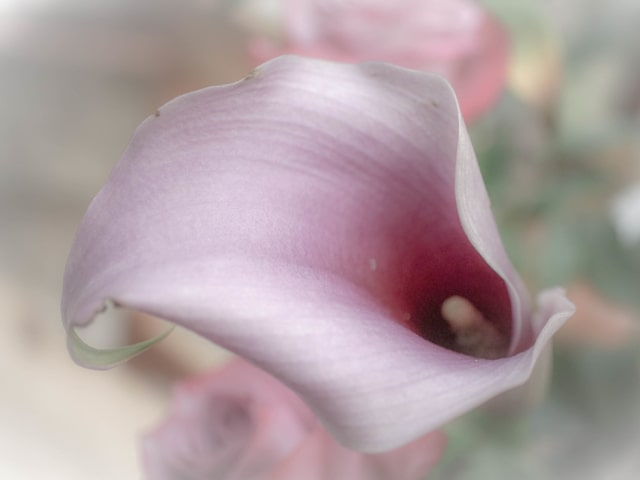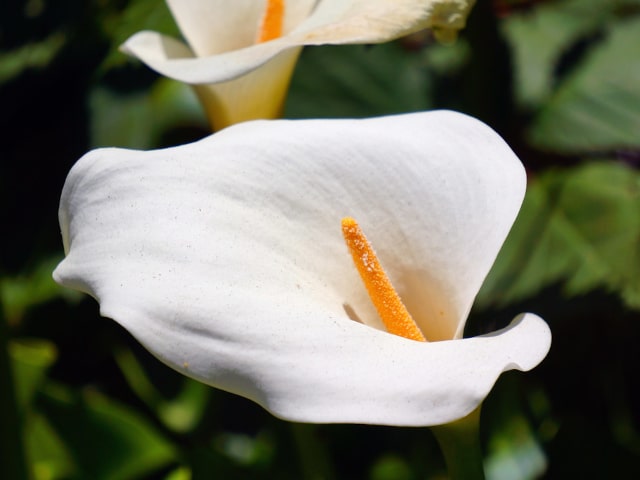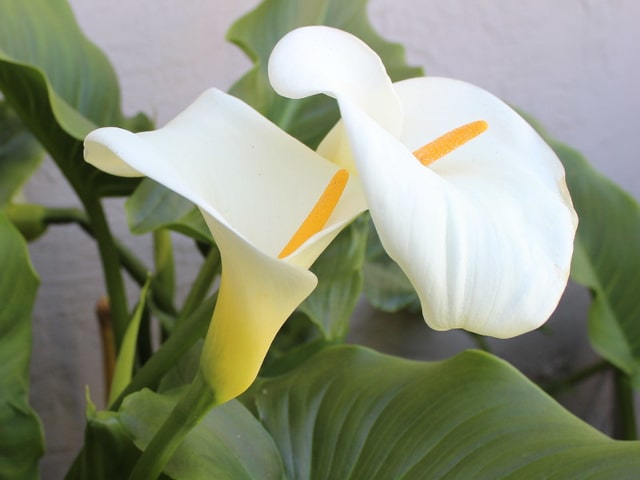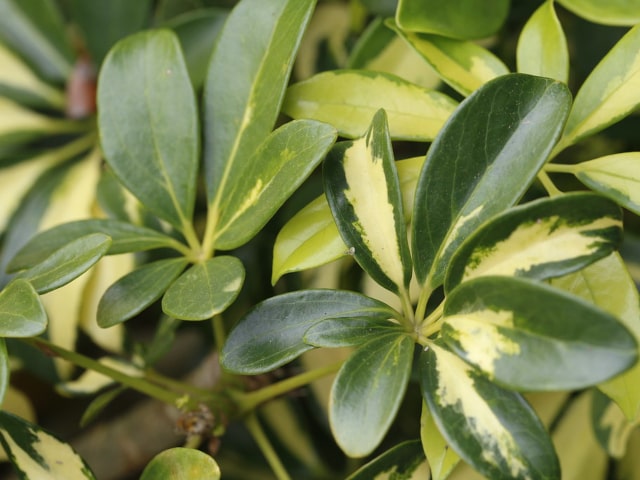
Calla Lily has gorgeous flowers. Also known as Trumpet Lilies or Lily of the Nile, this is a gorgeous plant with waxy-white flowers. The flowers are known to gently curl and twist so they have a characteristic shape with a pointy tip. While white is the most common color, keep in mind that there are varieties that produce pink, orange and red flowers.
Calla Lily Flowers
Calla Lily has gorgeous flowers. This plant has trumpet-shaped flowers that grow a few inches above the leaves at the top of a tall stalk. The flowers and can be up to 10 inches long. Each bloom makes a huge, single-petal flower. The flowers resemble an upturned bell, though one side is typically stretched out. The stamen in the center is yellow. Keep in mind that a single bulb can produce many leaves and flowers.
If you want to grow this plant you will probably want to make it bloom. The good news is the you typically don't need to encourage your Calla Lily to bloom. It requires very little care to thrive. All you need to provide to your Calla Lily to make it bloom is adequate light conditions and moisture.
As long as these two things are suitable for your Calla Lily it will produce blooms and flowers without much care or attention on your part. Keep this in mind if you wish to grow Calla Lily for its flowers.
What if Calla Lily Doesn't Flower?
In some cases, your Calla Lily might refuse to bloom. If it happens for a few months, don't worry. The issue is when your plant refuses to flower for the entire growing season. Luckily, this problem is easily solvable most of the time.
Typically, the issue is with the soil. If your Calla Lily refuses to flower, test the soil for pH values. In order for your plant to be healthy, it needs soil with pH values between 6 and 6.5. Anything out of these values may cause imbalance. If the pH of the soil is imbalanced, make sure to amend the soil or change it completely. It is important to give your Calla Lily a good growing medium with adequate pH values.
In case both the pH values of the soil and moisture are adequate, the problem with flowering might be due to inadequate light. Plants can't produce blooms if there is not enough sunlight. In case your Calla Lily doesn't flower, the problem might be too little sunlight. To fix this problem, simply place it somewhere with more light. However, make sure not to change the temperature in the room or area where you grow your Calla Lily.
Keep in mind that any changes you may introduce will show results only after 4 weeks or so. In other words, it takes around a month for your Calla Lily to start producing flowers, so be patient.
Additional Tips
Here are some additional tips for growing your Calla Lily that will make it thrive and produce rich flowers:
- When you need to repot your plant, simply dig it out of the soil, including the rhizome. Re-pot the rhizome in the new container with the shoots points up. Make sure to place it at least 3 inches deep into the soil. Cover with soil and water once. Make sure you see the new growth before you water your plant again.
- Propagating your Calla Lily is not difficult. If the plant is fertilized, it will produce small black berries. Simply dry them out and plant in the potting soil about 3 inches deep. These berries will develop into new bulbs. Another way to propagate is to cut the rhizome and take a section of it. Dry it out for a few days and then plant it in the soil. Just make sure that the non-smooth side is up. Alternatively, you can simply dry the whole bulb after the plant has died in the fall. In the next growing season, plant the bulb about 3 inches deep in the soil. You can expect it to bloom in about 3 months.
- Calla Lily doesn't have many pests. Occasionally, it may be attacked by small insects. If this happens, treat your plant with a spray safe for plants or an insecticide soap.
- Calla Lily plants can develop certain diseases. The most common are rhizome rot, gray mold and bacterial soft rot.
- It is best to allow your Calla Lily to die back for several months per year. This will benefit your plant since it will allow the flowers to rest. When the flowers come back in the following growing season the bloom will be richer and stronger.
Photo credit: judy dean




6 Comments
My beautiful deep purple calls I received for Mother's day, the flowers curled tightly closed up. They have not wilted, the leaves look healthy but I don't know what's wrong. Can someone help?
My Calla Lily is bending over. Do I trim it back? Never had one so do not know how to take care of it!
My Calla Lilies were brought into the house for the winter, they are now blooming but only the foliage which are like 17 - 18" long but no flowers. They are in my sunroom with plenty of sunlight and are watered once a week. Can you tell me why I have such long foliage but no flowers. Thank you for your assistance.
I had many arums in my shade house which seemed to rot (the bulbs) during winter. I was scared to plant out due to lots of rat moles. Very few flowers. This year I planted in the garden with aloes. More sun and they are growing well and have started to flower. In winter when they are dormant the aloes will flower. Moles... will have to see.
Love but think light is the problem. Thanks